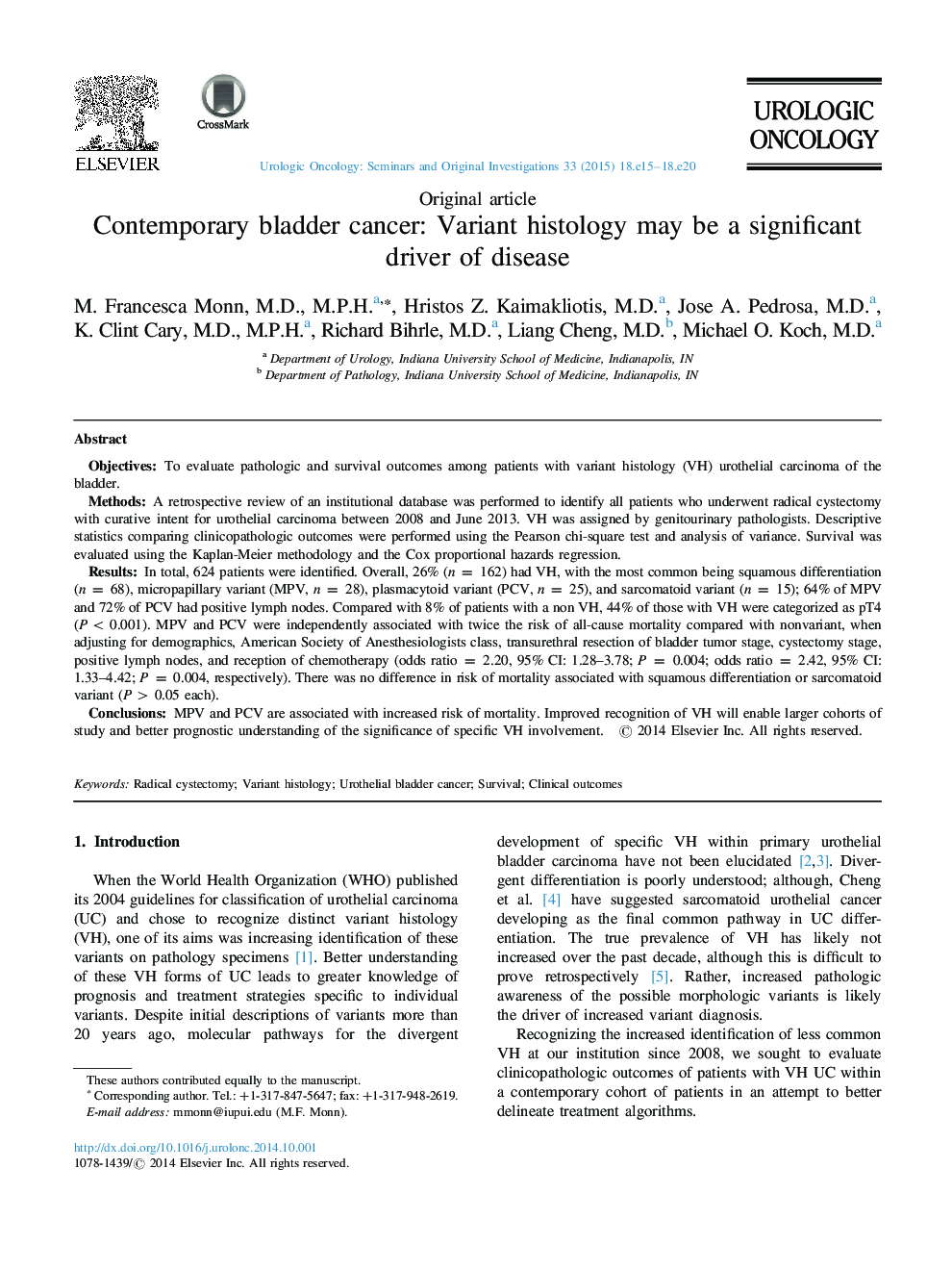| Article ID | Journal | Published Year | Pages | File Type |
|---|---|---|---|---|
| 6194216 | Urologic Oncology: Seminars and Original Investigations | 2015 | 6 Pages |
ObjectivesTo evaluate pathologic and survival outcomes among patients with variant histology (VH) urothelial carcinoma of the bladder.MethodsA retrospective review of an institutional database was performed to identify all patients who underwent radical cystectomy with curative intent for urothelial carcinoma between 2008 and June 2013. VH was assigned by genitourinary pathologists. Descriptive statistics comparing clinicopathologic outcomes were performed using the Pearson chi-square test and analysis of variance. Survival was evaluated using the Kaplan-Meier methodology and the Cox proportional hazards regression.ResultsIn total, 624 patients were identified. Overall, 26% (n = 162) had VH, with the most common being squamous differentiation (n = 68), micropapillary variant (MPV, n = 28), plasmacytoid variant (PCV, n = 25), and sarcomatoid variant (n = 15); 64% of MPV and 72% of PCV had positive lymph nodes. Compared with 8% of patients with a non VH, 44% of those with VH were categorized as pT4 (P<0.001). MPV and PCV were independently associated with twice the risk of all-cause mortality compared with nonvariant, when adjusting for demographics, American Society of Anesthesiologists class, transurethral resection of bladder tumor stage, cystectomy stage, positive lymph nodes, and reception of chemotherapy (odds ratio = 2.20, 95% CI: 1.28-3.78; P = 0.004; odds ratio = 2.42, 95% CI: 1.33-4.42; P = 0.004, respectively). There was no difference in risk of mortality associated with squamous differentiation or sarcomatoid variant (P>0.05 each).ConclusionsMPV and PCV are associated with increased risk of mortality. Improved recognition of VH will enable larger cohorts of study and better prognostic understanding of the significance of specific VH involvement.
